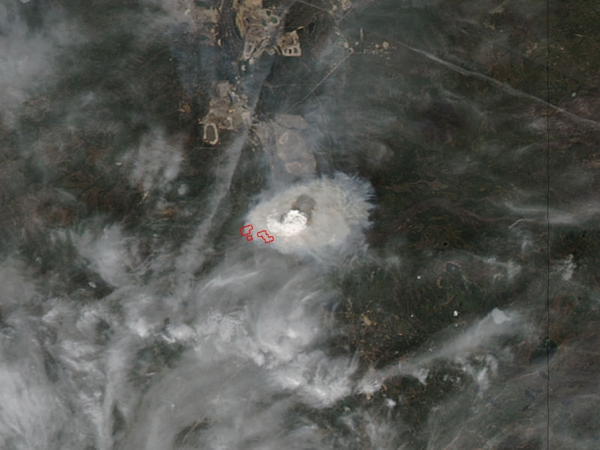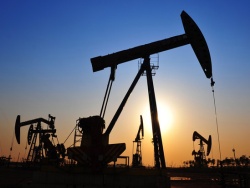Fires in Canada and the worsening political conflict in Libya is again pushing the barrel up. Oil prices are rising on fears of investors about possible disruptions in supply and reduce production. However, experts note that the temporary factors and expect significant price adjustment in the long run not worth it. The forecast for 2016 remains the same — about $45 per barrel.
After the recent downward correction in oil prices again shifted to growth. On Thursday evening, may 5, on the London ICE Futures oil futures Brent crude for delivery in June rose by 1.43%, to $of 45.55 per barrel. June futures for light oil WTI on the new York Mercantile exchange (NYMEX) rose by 2.58% to $44,91 per barrel. During the day Brent was trading already of $45.7 per barrel, while WTI has broken through $45 per barrel.
The upward trend could not prevent even the information that commercial oil stocks in the United States for the last week of April rose more than forecasts of analysts (up to 543,4 million barrels). This demonstrates that investors are more concerned about possible supply disruptions than simply the increase or decrease in oil reserves. “The current situation differs from last year that the market starts to a greater extent to evaluate the supply disruptions,” noted a new trend strategist Swiss consulting company Petromatrix Olivier Jacob in a conversation with Reuters.
Canada burns
The main driver of growth of oil today were forest fires in the canadian province of Alberta, where oil Sands are deposited.
This year the season of forest fires in Western Canada started earlier than usual due to the dry winter and the almost complete lack of rain in the spring. According to local authorities, now on fire about 80 sq. km, however, the focus in the coming days, may increase to 100 sq. km 88-thousandth the population of the city of Fort McMurray in Alberta was evacuated in advance.

For oil Sands near McMurray daily produces about 2.5 million barrels. About half of the total oil production in Canada (4.5 million barrels per day, or 5% of world production).
Themselves oil areas are reported to be out of threat of fires raging in the South, but oil companies are forced to cut oil production due to evacuations of the city’s population. Among its inhabitants were many employees of companies.
According to Bloomberg, Royal Dutch Shell has already shut down one of the towers at oil Sands with a production of 255 thousand barrels./day and is in the process of closing another. Husky has cut production on the tower Sunrise from 30 thousand to 10 thousand barrels, while Connacher has reduced production by 4 million barrels in the Great Divide project. Suncor Energy, Syncrude Canada, Inter Pipeline and Connacher Oil & Gas has also reduced production in connection with the evacuation.
Official data on the overall level of decline in oil production in Canada yet, but several analytical centers have already prepared their estimates.
As writes the Financial Times referring to experts of the consulting company Energy Aspects, a fire in Alberta has led to reduced supplies of canadian oil by 0.8 million barrels per day.
According to Bloomberg, this may be to reduce output by more than 1 million barrels per day. For comparison: the volume of world overproduction of oil is estimated to be from 0.5 million to 1.5 million barrels per day.
The spread of fire will soon be stopped, I assure the canadian firefighters. Moreover, in the coming days in this region of Canada is expected cold snap, which will also help to cope with the fire. But before the upcoming weekend, we can hardly expect the cease-fire, told Bloomberg in canadian service emergencies.
Oil companies are not the first to suffer losses because of fires in Canada. In 2011, a number of oil producers had to shut down production in Great Slave lake, just North in Alberta. For the same reason, but in the last year of the production companies Canadian Natural Resources and Cenovus Energy were destroyed in the village of cold lake.
Confusion in Libya
But not only forest fires in Canada warm up oil prices. The oil market players are concerned about the deteriorating situation in Libya, where oil production has decreased by almost five times. If, prior to the internal conflict in 2011, the country produced about 1.6 million barrels per day, by the end of March 2016, according to OPEC, production amounted to only 345 thousand barrels.
Production in Libya could be reduced even more — by 120 thousand barrels per day, thus reaching 225 thousand, writes Reuters with reference to the relevant Libyan officials in Tripoli.
This is due to the fact that the confrontation between the East and West of Libya has led to bureaucratic delays in registration of documents for the export of oil from the country. The power of the Western Libyan regions dissatisfied with the fact that the Eastern part of the country, more rich in oil resources, tries to sell oil abroad. One of the last conflicts led to the fact that the tanker Swiss commodity trader Glencore after several days of fruitless expectations, left the Eastern port of Marsa El-Hariga empty (planned load it on the 650 thousand barrels).
However, experts believe that the positive effect of these two factors will be short-term. Similar speculative growth driver for oil prices in the second half of April came the oil strike in Kuwait, where oil production in the country fell from 1.7 million barrels a day.
Despite rising on Wednesday, oil prices this week remain below the peak of late April. 30 April Brent was trading at year-highs — $of 48.16 per barrel. WTI also reached its highest level since the beginning of the year $46,78.
Prices last week went down after reports about the growth of oil production in OPEC countries (390 thousand barrels per day). Production data for the OPEC countries are informal, they were published by the Agency Reuters with reference to the oil companies and industry experts. OPEC itself summary statistics for April are not yet published.
“To talk about any global market trends is possible only after at least a six-month period — the partner of company Rusenergy Michael Krutikhin. — Now trends as such, no.” According to experts, there are ordinary market fluctuations, while the prevalence of supply over demand is maintained, and, apparently, will remain for a long time. “Thus, at least until the end of the year the main price point remains at $45 per barrel”, — said Krutikhin.
He also noted that we should not expect any real action and consequences for the market from OPEC meeting to be held on June 2. Earlier, Iran said it was ready to join the quotas of the cartel, once come to the pre-sanctions production levels to 4 million barrels per day (restricting the exports and thus oil production the US sanctions and the EU against Iran were lifted on 16 January). By the way, just in June (though the end of the month) Islamic Republic of Iran has promised to reach that level. In March, according to OPEC, Iran was producing 3.4 million barrels per day.
Even before the lifting of sanctions Iran has repeatedly talked about his intentions after the removal of constraints to increase production and exports and stressed that OPEC permissions it does not need.
The problem is that without increased production, Iran Kartel their quotas have not comply. In January 2016, for example, was recorded a record — 32,44 million barrels per day in limits to 30 million barrels. According to Bloomberg, OPEC has no plans at the meeting in Vienna to discuss the limit of oil production after the failure of the April negotiations in Doha. Held on 17 April meeting in Qatar, which was attended by the OPEC countries (excluding Iran) and Russia, Kazakhstan, Azerbaijan, Oman and Bahrain, gave no results.








